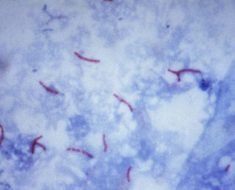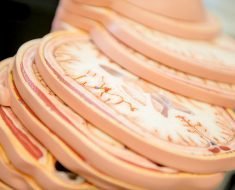A brand new pocket card designed to hold life-saving heart attack medications—the brainchild of a University of Alberta physician—promises to help save lives.
The SMHeartCard, smaller than a credit card, is a container that stably holds both ASA (acetylsalicylic acid) and nitroglycerin, the standard medicine given for treating heart attack.
“Very few people at risk of heart attacks carry around the two medicines they need to urgently take in the event of heart failure,” said John Mackey, an oncology professor in the U of A’s Faculty of Medicine & Dentistry.
“A recent study from Alberta showed that not one heart attack patient carried ASA around with them, and only 11 per cent of men and 20 per cent of women had nitroglycerine pills on them. And do you know why not?” he added.
“Lack of convenience.”
Filling a need
“The time from the onset of chest pain to getting ASA and nitroglycerin is a major predictor of heart attack survival,” said Mackey. “Forty per cent of patients never make it to hospital. And that’s why the first line of treatment in the ambulance is administration of these medicines.”
That’s also why Mackey and retired engineer colleague James Stewart put their heads together to design a handy, innovative container they hope people at risk of heart attacks keep with them at all times.
The SMHeartCard features two enclosed containers, one that should be filled with four 81 mg ASA pills and the other with three nitroglycerin pills. The containers are readily accessed by flipping open cap lids.
Upon experiencing pain, patients immediately chew the four ASA pills and take one nitroglycerin. After waiting five minutes, if the pain does not subside, they take the second nitroglycerin pill. They wait another five minutes, and if the pain has still has not subsided, they take the third pill and call 911.
Why wait to call 911? Because if the pain goes away quickly, it may be just angina or a warning, explained Mackey.
“Every minute that goes by in an untreated, true heart attack, however, is dangerous,” he said. “ASA immediately starts to work to open up blood clots, and the nitroglycerin works to open up blood vessels and reduce the workload on the heart. Early treatment allows for a much smaller heart attack, reduces the heart damage that might otherwise occur and, ultimately, improves long-term chances of survival.”
Designing a solution
The key was designing a container that could stably hold the nitroglycerine, noted Mackey.
“It tends to evaporate and can’t be stored in plastic, which absorbs it.”
That’s why nitroglycerin is usually supplied in clunky spray bottles or glass bottles—hardly convenient to carry around, he added.
Mackey and Stewart developed a prototype of the SMHeartCard using polyfluorinated polymers to encase the nitroglycerin pills—the only material other than glass that can handle nitroglycerin.
They then asked U of A colleague Neal Davies, a professor and dean of the Faculty of Pharmacy and Pharmaceutical Sciences, to test the SMHeartCard.
“It turns out the container is as effective as a glass bottle, despite the fact the pills are stored at body temperature for six months. In fact, we raised the temperature as high as 60C and as low as 4C and the pills are just as stable,” said Mackey, adding that they are presenting their findings at the Canadian Cardiovascular Congress on Oct. 21.
The SMHeartCard is available online for $19.99. The ASA can be purchased separately over the counter, and while prescriptions are not needed for nitroglycerin, it is sold behind the pharmacy counter so one must ask for it.
“Most insurance plans also cover the cost of nitroglycerin,” added Mackey, who recently got to test out his product in the market.
SMHeartCard in action
“I was recently on a flight when the pilot asked if there were any doctors on board.”
Mackey quickly introduced himself to the flight attendant.
“A guy in the back was having a heart attack. So I reached into my pocket and opened the SMHeartCard I was carrying.”
He administered the four ASA pills it held, and the first of the three nitroglycerin pills.
“After five minutes, the pain went from a seven to a five, so I administered the second nitroglycerin pill. When I administered the third one, the pain went away and he felt and looked fine.”
When the pilot asked Mackey whether the flight needed to be diverted, Mackey advised him that the patient was well enough to continue. Later, he learned from the family that the man had had a very small heart attack and had been discharged home.
“We couldn’t believe it, but just six weeks after carrying the SMHeartCard, we’d found a use for it,” added Mackey.
Source: Read Full Article





